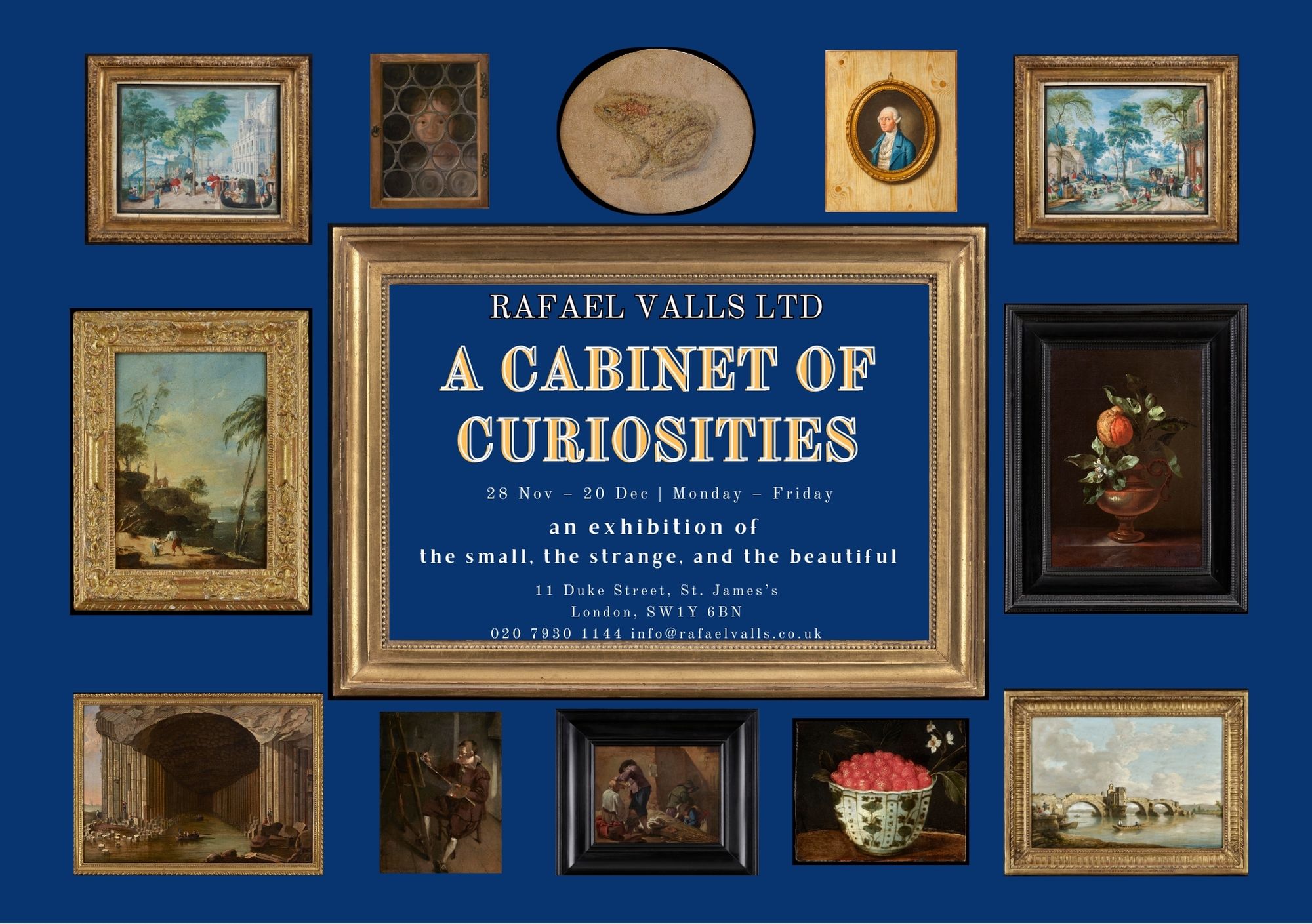Andries Both
c.1611/2 - 1642
A Barber and Farmers going about their Business

Medium:
Oil on Copper
Category:
Dimensions:
18(h) x 22(w) cms
Framed Dimensions:
28.5(h) x 33(w) cms
Signed:
Signed with Monogram A. B. Lower Left
Exhibitions:
Essay:
Andries Both was the elder brother of the Italianate landscape painter Jan Dirksz Both and a member of the so called Bamboccianti in Rome. The son of a glass painter and the pupil of Abraham Bloemaert, he is thought to have painted the figures in some of his brother's landscapes (according to Sandrart). This view has recently been revised.
Both is known to have been in Rouen in 1633 and then, shortly afterwards, in Lyon from where he travelled to Rome. He remained here from 1635 until 1641. In Rome he shared a studio with Jan van Causteren, a fellow Utrecht painter. When his brother arrived in Rome in 1638 they lived together on the Via Vittoria and both joined the Academy of St Luke. Both was deeply influenced by Pieter van Laer and his work shows a greater debt to the older painter than we can detect in that of his brother.
Tragically, Andries Both drowned in a canal in Venice while the worse for wear after a night of revelry and thus his promising career came to a premature end. His paintings are rare due to his early death but they typically show a slightly humorous quality and keen insight into bawdy behaviour.
-
Ellis Dullaart of the RKD in The Hague has confirmed the attribution of the work to Andries Both, including it in the database of the RKD as an authentic work by Both: (https://rkd.nl/images/278064). She notes in a statement dated 12 August 2016 that, in addition to the work listed here, several other versions of this composition are documented: A larger, unsigned, painting on canvas in the Kunstsammlung der Universität Göttingen (inv./cat.nr. GG 011) was first attributed to Jan Both and later to Andries Both, (but also at some point attributed to Thomas Wijck). Dullaart finds the painting in Göttingen less characteristic of Both in its execution.
Another version came up for auction at Sotheby's, London, 7 July 1993, while a third variant was with Hazlitt, London, in 1977. Dullaart further assumes that our painting is a late work by Andries Both, created between 1635 and 1641 during Both’s stay in Rome.
A preliminary drawing for our composition is kept in the Albertina Graphic Collection, Vienna (inv. no. 9238). Dr. Bernhard Schnackenburg sees the present picture and the Vienna drawing as models for the version in Göttingen.
Provenance:
Julius Böhler Munich October-November 1975 (catalog no. 3),
Important old German private collection,
Private collection, Rhineland, Germany.
Literature:
T. Kren, 'J. Miel (1599-1664): A Flemish painter in Rome', dissertation Yale University, 1978, ed. 1, p. 82f., ed. 2, p. 15f., no. A7.
L. Trezzani, L. Laureati & G. Briganti, 'The Bamboccianti: The Painters of Everyday Life in Seventeenth Century Rome', Rome, 1983, pp. 200, 202, ill. p. 211.
E. Mai (ed.), I Bamboccianti: Dutch Painter Rebels in Baroque Rome, Milan 1991, p. 132, no. 4.2 (with a coloured illustration of the Göttingen version).
B. Schnackenburg, ‘The beginnings of Thomas Adriaensz. Wyck (c. 1620-1677) as draughtsman and painter’, Oud Holland 106 (1992), p. 153, ill.
K. Weick-Joch, Kulturtransfer im Rom des 17. Jahrhunderts: die Malerei der Bamboccianti, Weimar 2015, p. 77, note 294 (with a colour illustration of the Göttingen version).
